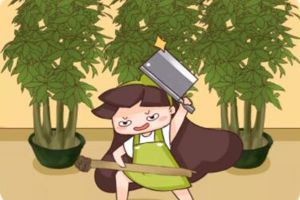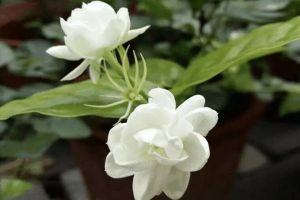Gardenia drink some fairy water, immediately green straight oil, rub crazy growth can not stop!

Too much watering leads to yellow leaves.
Gardenia flowering ended just in time for autumn, many friends feel that the weather is cool, gardenia should not be so delicate in summer, they began to water!
Symptoms:
The leaves slowly turn yellow upward from the bottom, there are basically no yellow leaves at the top, the veins of the leaves are normal green, and the rest of the leaves are yellow.
Rescue measures:
Poke the soil with chopsticks, loosen the soil, and then put it in a well-ventilated place to speed up the evaporation of water accumulated in the soil.
Alkaline soil leads to leaf yellowing
Friends in the north should have a deep understanding that gardenia is really difficult to raise! This is mainly because the alkaline soil in the north is not suitable for the growth of Gardenia jasminoides, and yellowing leaves have become a common occurrence.
Symptoms:
The veins of the new leaves are green, but the mesophyll is yellowish green, while the old leaves are basically normal.
Rescue measures:
Prepare a plastic bottle, add 100g citric acid, put a rusty nail and fill it with water. After rust disappears and the solution turns light green, gardenia is watered 500 times with water. Once every 10 days, the yellow leaves will slowly disappear.
Excessive fertilization leads to leaf yellow
In order to make gardenia grow fast and strong, many flower friends like to add some fertilizer to the water every time they are watered. More times, they will find more and more yellow leaves of gardenia!
Symptoms:
The old leaves first turn yellow from the veins, and gradually spread to the whole leaf. If it is serious, the whole plant will turn yellow.
Rescue measures:
Irrigate the basin soil with heavy water, or use the soaking method to dilute the excessive fertilizer in the soil.
Environmental changes lead to leaf yellowing
Many flower friends like to buy gardenia at the end of the season, but after buying them home, the original green leaves suddenly turn yellow and fall all the time.
Symptoms:
After gardenia bought home for a few days or moved back indoors from outside, yellowing leaves appeared unevenly.
Rescue measures:
Keep it in an astigmatic ventilation place for a period of time, and wait for Gardenia to slowly adapt to the new environment. If the gardenia leaves yellowed for more than half a month, consider washing the roots and changing the basin.
Wash the roots of Gardenia jasminoides to ensure that they will not rot for 10 years!
Many of the gardenia bought in the flower market are made of glue clay, which will gradually become hardened after many times of watering, like bricks, which is easy to cause gardenia rotten roots.
1. If it is found that the soil is very hardened, it is best to wash the roots out of the basin for the normal growth of Gardenia jasminoides.
2. Prepare a large bucket to pour into the water, soak the gardenia in the water and wash the roots. Do not break the soil on the root system, it is easy to hurt the root, it is best to take it out and shake it every once in a while and let it soak clean naturally.
3. After cleaning, trim the rotten roots of Gardenia jasminoides, and then soak in the rooting water for half an hour. Some carbendazim can be added to the rooting water.
4. Prepare nutritious soil during the root soaking of Gardenia jasminoides. Gardenia soil can be mixed with rotten leaf soil and coconut bran, mixed with some coarse sand and perlite. Spread a few pieces of broken bricks or strips of wood at the bottom of the flowerpot before the soil goes into the pot.
5. After potting, pour water thoroughly and move to a cool and ventilated place. Prepare a mineral water bottle, pierce 6 small holes with a sewing needle on one side of the bottle, fill it with water and tighten the cap. Place it next to the root of the gardenia and let it drip slowly.
- Prev

The flowers you threw away were cut down by me, sprouting crazily, green for a month!
Autumn is finally here! But looking at the flowers and plants that were devastated in summer, many flower friends disliked them very much and threw them away. But if I find your dying flowers! Divide five into two, make sure that a month later, it will be greener than when you bought it.
- Next

Now quickly insert these "three kinds of flowers", easy to take root, survive quickly, without "black rot."
The best cutting season has come, after a summer of high temperature, flower friends should work up! Today, Huahua specially chooses some flowers that are easy to take root, survive quickly, and have no "black rot" for your reference.
Related
- What if the leaves of potted flowers turn yellow?
- Florescence Control of several Flowers
- Anti-freezing technology and post-freezing nursing technology of flowers
- What is the classification of flowers? What are the common methods of flower classification?
- Prevention and control of alkali and acid damage of flowers in courtyard
- Technology of Anti-freezing and restoring growth of Flower seedlings in greenhouse and greenhouse
- How does flower fertilization not hurt the root? Fertilization technology of flowers
- Key points of disinfection in flower greenhouse
- Several pesticides that are banned or used cautiously in flowers
- How to fertilize the flowers that watch the leaves?

